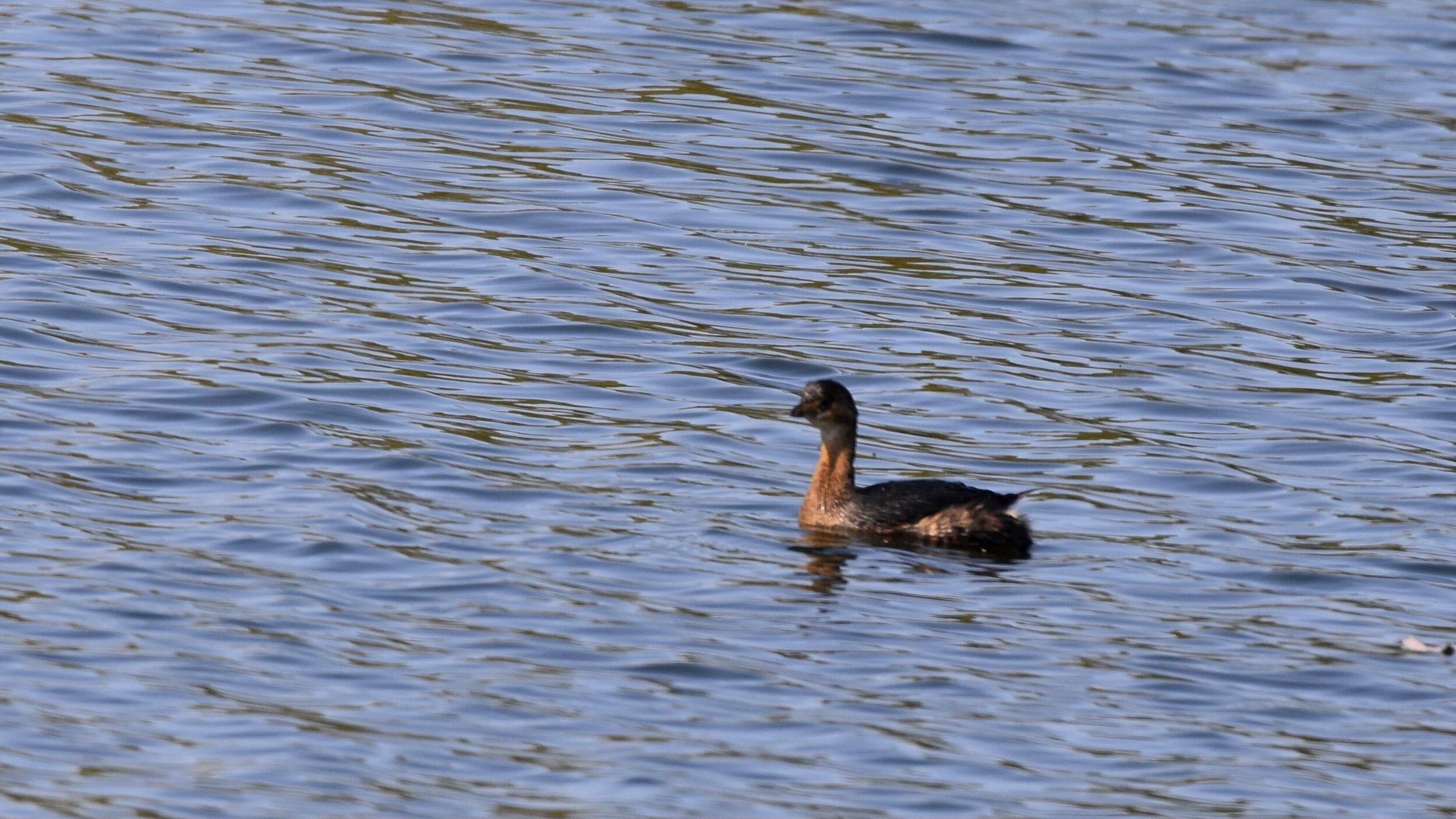I believe this is a Pied-billed grebe. It must have stopped to take a break while it is migrating south. We saw it on the pond at Stillwater Prairie Reserve last week.
A little about this small duck:
Pied-billed grebes are small, stocky, and short-necked. They are 31–38 cm (12–15 in) in length, with a wingspan of 45–62 cm (18–24 in) and weigh 253–568 g (8.9–20.0 oz).[10] They are mainly brown, with a darker crown and back. Their brown color serves as camouflage in the marshes they live in. They do not have white under their wings when flying, like other grebes. Their undertail is white and they have a short, blunt chicken-like bill that is a light grey color, which in summer is encircled by a broad black band (hence the name). In the summer, its throat is black. There is no sexual dimorphism. Juveniles have black and white stripes and look more like winter adults. This grebe does not have webbed feet. Its toes have lobes that come out of the side of each toe. These lobes allow for easy paddling. When flying, the feet appear behind the body due to the feet's placement in the far back of the body.
It may be confused with the least grebe, although that species is much smaller and has a thinner bill. Other similarly sized grebes are very distinct in plumage, i.e. the eared grebe and horned grebe. Both species bear much more colorful breeding plumage, with rufous sides, golden crests along the side of the head against contrasting slaty color (also a rufous neck in the horned); while in winter, both the eared and horned grebes are pied with slaty and cream color and have red eyes. (wikipedia)
~ Rick
Rick’s latest technology muse:
Check out our vlog, which includes more pictures and video on YouTube at tales.photos. Remember to subscribe!
Prints are available for many of the photos on this site on canvas, metal or glass. Contact Rick for more information.
©2019 ©2020 Rick Cartwright

